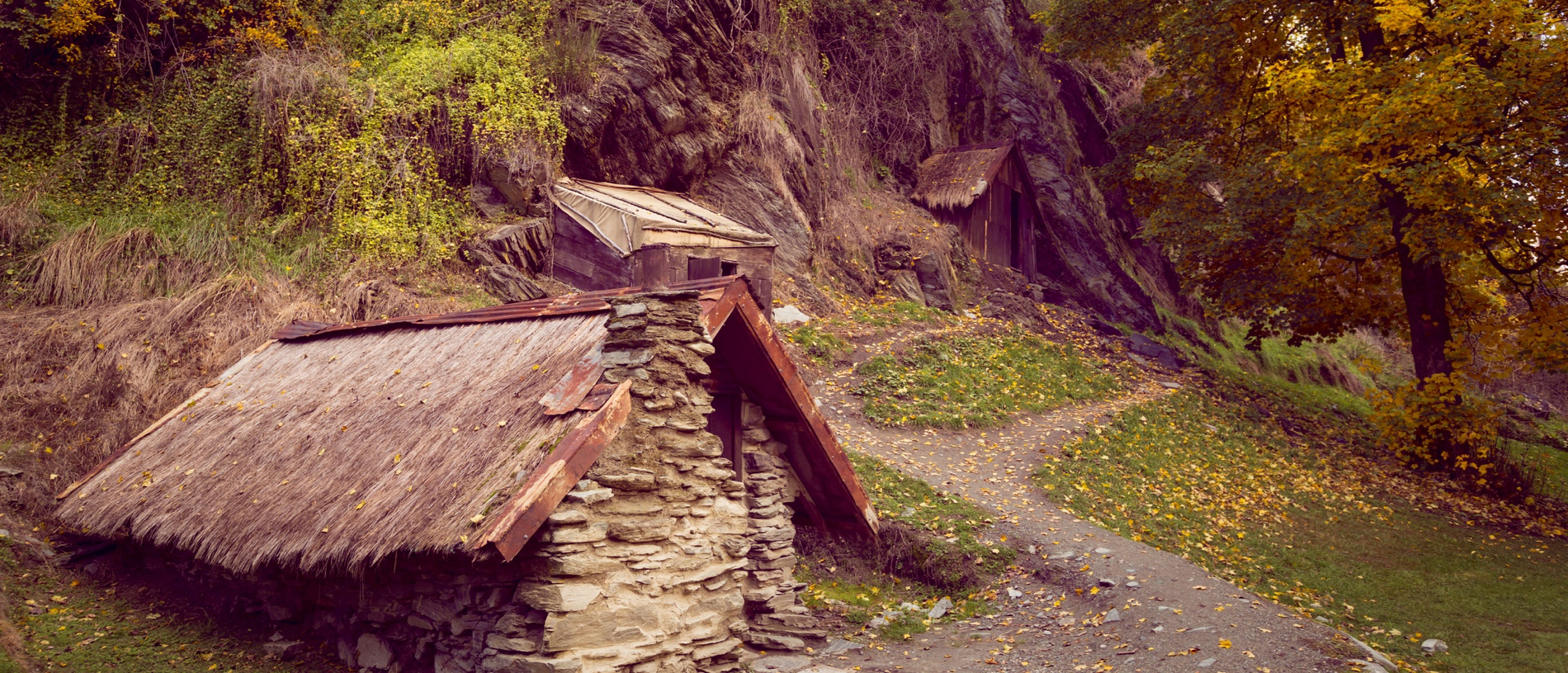
Arrowtown Chinese Settlement
Walk around Arrowtown Chinese Settlement, a partially restored and well-interpreted settlement from the 1880s.
The Australian plate hit the Pacific plate with a bloody great crunch, shoving a bunch of the earth’s crust upward in the big, jagged cockscomb we know as the Southern Alps.
Then a succession of glaciers ground their way down the declivities, pounding the rock to powder. Then the ice melted, and the glaciers were replaced by rivers that carried the rock flour down to the lowlands and deposited it there.
And finally, in 1862, millions of years after this whole process began, some joker swirled a bit of the Arrow River’s alluvial grit around in his prospector’s pan and swished the last fines out to reveal a nice, greasy-looking yellow crescent there.
With the discovery of gold in the bleak basin of the Arrow, it was all on for young and old. Hundreds of men who had upped sticks from the depleted fields of Victoria to chase ‘the colour’ in the tussock land around Gabriel’s Gully the previous year now made the long trek to the site of the latest find.
First, a tent city sprang up. Then, as the Arrow yielded up its riches, canvas was replaced by more permanent building materials, notably timber and the fine, flat, local schist. A little town sprang up on the banks of the Arrow, laid out in the classic, frontier-town pattern with shop frontages flanking a main street barely wide enough for two carts to pass abreast. In a burst of inspiration for which the hard men of the goldfields were particularly noted, the settlement was named Arrowtown.
The beauty of Arrowtown is that it was built to last and if you look carefully, you’ll get some sense of what life was like for the miners. The ruins of much of the workings are still visible, as are quite a few of the earliest dwellings and the commercial premises. Perhaps most poignant of all is the historic reserve where the restored dwellings of the Chinese miners, who arrived to pick over the tailings of the claims already worked out by their European predecessors, have been preserved.
For the full effect, come here in winter, try your hand at panning for gold in the bitter waters of the Arrow, then visit the Chinese settlement and imagine what it must have been like trying to get warm in a dirt-floored stone hut with a rag over the unglazed window and only a smoky fire for heat.
Boom followed bust in a cycle as relentless as the geological processes that shaped this area. First farming, then viticulture flourished in the gravelly soil; then the tourists came in numbers to rival the miners at the height of the rush. After all, Arrowtown’s a pretty little spot to look at, in all weathers and at any time of year.